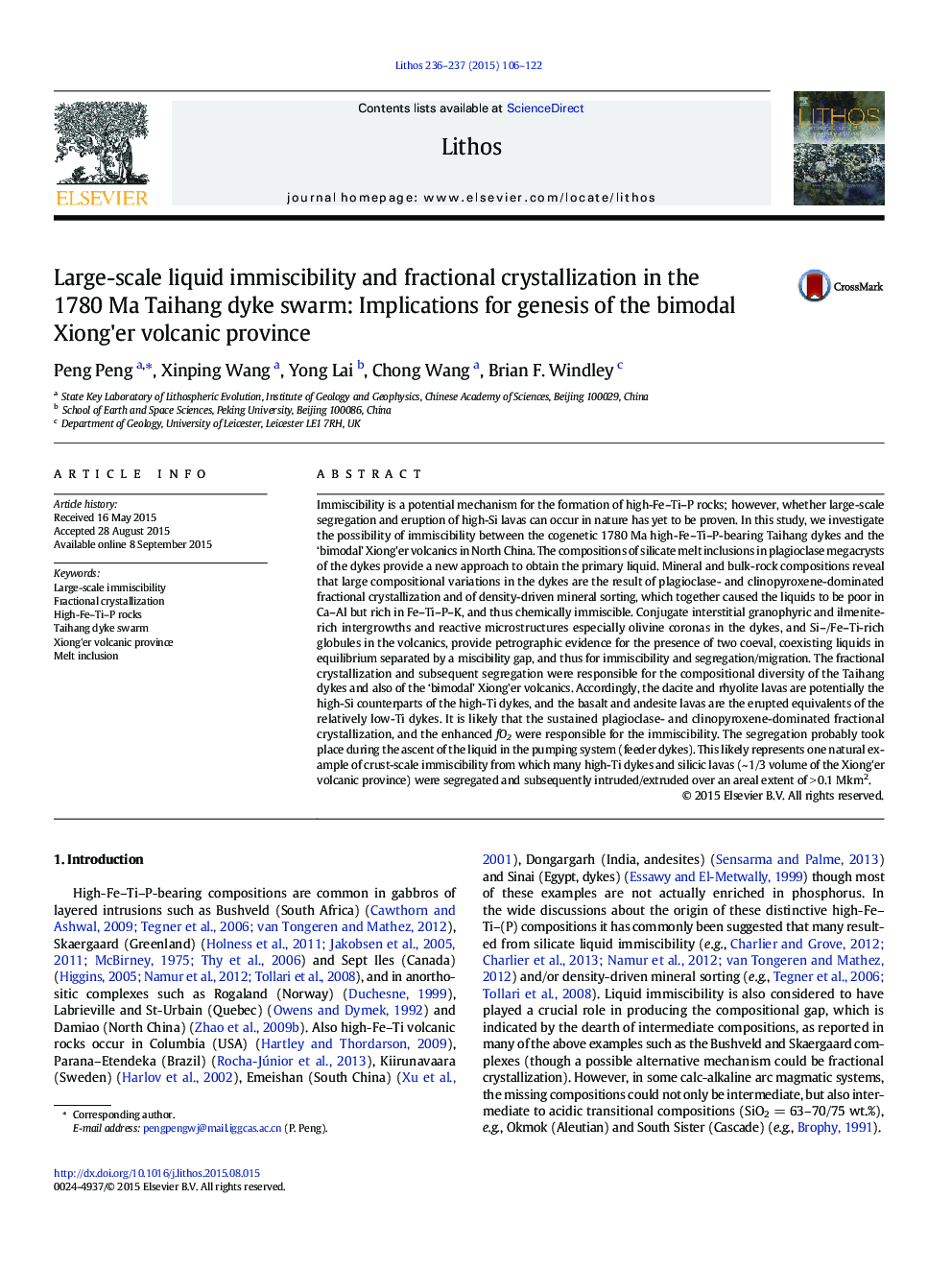| کد مقاله | کد نشریه | سال انتشار | مقاله انگلیسی | نسخه تمام متن |
|---|---|---|---|---|
| 4715600 | 1638656 | 2015 | 17 صفحه PDF | دانلود رایگان |

• The high-Ti–Fe–P Taihang dykes were feeders of the bimodal Xiong'er volcanics.
• Melt inclusions in the dykes enable calculation of the primary liquid.
• Microstructures, coronas, and conjugate intergrowths support immiscibility.
• Fractional crystallization and density-driven segregation led to immiscibility.
• This is a possible case showing crust-scale immiscibility.
Immiscibility is a potential mechanism for the formation of high-Fe–Ti–P rocks; however, whether large-scale segregation and eruption of high-Si lavas can occur in nature has yet to be proven. In this study, we investigate the possibility of immiscibility between the cogenetic 1780 Ma high-Fe–Ti–P-bearing Taihang dykes and the ‘bimodal’ Xiong'er volcanics in North China. The compositions of silicate melt inclusions in plagioclase megacrysts of the dykes provide a new approach to obtain the primary liquid. Mineral and bulk-rock compositions reveal that large compositional variations in the dykes are the result of plagioclase- and clinopyroxene-dominated fractional crystallization and of density-driven mineral sorting, which together caused the liquids to be poor in Ca–Al but rich in Fe–Ti–P–K, and thus chemically immiscible. Conjugate interstitial granophyric and ilmenite-rich intergrowths and reactive microstructures especially olivine coronas in the dykes, and Si–/Fe–Ti-rich globules in the volcanics, provide petrographic evidence for the presence of two coeval, coexisting liquids in equilibrium separated by a miscibility gap, and thus for immiscibility and segregation/migration. The fractional crystallization and subsequent segregation were responsible for the compositional diversity of the Taihang dykes and also of the ‘bimodal’ Xiong'er volcanics. Accordingly, the dacite and rhyolite lavas are potentially the high-Si counterparts of the high-Ti dykes, and the basalt and andesite lavas are the erupted equivalents of the relatively low-Ti dykes. It is likely that the sustained plagioclase- and clinopyroxene-dominated fractional crystallization, and the enhanced fO2 were responsible for the immiscibility. The segregation probably took place during the ascent of the liquid in the pumping system (feeder dykes). This likely represents one natural example of crust-scale immiscibility from which many high-Ti dykes and silicic lavas (~ 1/3 volume of the Xiong'er volcanic province) were segregated and subsequently intruded/extruded over an areal extent of > 0.1 Mkm2.
Journal: Lithos - Volumes 236–237, November 2015, Pages 106–122